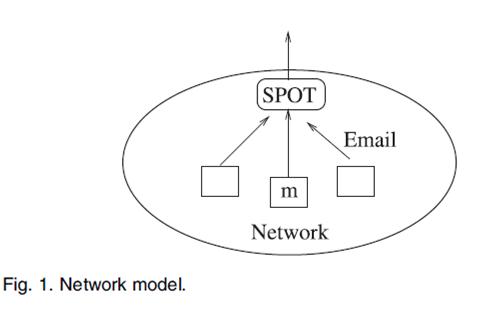Participatory Privacy: Enabling Privacy
in Participatory Sensing
ABSTRACT:
Participatory sensing is an emerging computing
paradigm that enables the distributed collection of data by self-selected
participants. It allows the increasing number of mobile phone users to share
local knowledge acquired by their sensor-equipped devices (e.g., to monitor
temperature, pollution level, or consumer pricing information). While research
initiatives and prototypes proliferate, their real-world impact is often
bounded to comprehensive user participation. If users have no incentive, or feel
that their privacy might be endangered, it is likely that they will not
participate. In this article, we focus on privacy protection in participatory
sensing and introduce a suitable privacy-enhanced infrastructure. First, we
provide a set of definitions of privacy requirements for both data producers
(i.e., users providing sensed information) and consumers (i.e., applications
accessing the data). Then we propose an efficient solution designed for mobile
phone users, which incurs very low overhead. Finally, we discuss a number of
open problems and possible research directions.
EXISTING SYSTEM:
In the last few years, PS initiatives have
multiplied, ranging from research prototypes to deployed systems. Due to space limitations
we briefly review some PS application that apparently expose participant
privacy (location, habits, etc.). Each of them can easily be enhanced with our
privacy-protecting layer.
DISADVANTAGES
OF EXISTING SYSTEM:
Privacy in participatory sensing relying on weak
assumptions: they attempted to protect anonymity of mobile nodes through
the use of Mix Networks. (A Mix Network is a statistical-based anonymizing infrastructure
that provides k-anonymity; i.e., an adversary cannot tell a user from a
set of k.) However, Mix Networks are unsuitable for many PS settings.
They do not attain provable privacy guarantees and assume the presence of a
ubiquitous WiFi infrastructure used by mobile nodes, whereas PS applications do
leverage the increasing use of broadband 3G/4G connectivity. In fact, a
ubiquitous presence of open WiFi networks is not realistic today or anticipated
in the near future.
PROPOSED SYSTEM:
We now present our innovative solution for a
Privacy-Enhanced Participatory Sensing Infrastructure (PEPSI). PEPSI protects
privacy using efficient cryptographic tools. Similar to other cryptographic
solutions, it introduces an additional (offline) entity, the registration
authority. It sets up system parameters and manages mobile nodes or queriers
registration. However, the registration authority is not involved in real-time operations
(e.g., query/report matching); nor is it trusted to intervene for protecting
participants’ privacy.
PEPSI allows the service provider to perform
report/query matching while guaranteeing the privacy of both mobile nodes and
queriers. It aims at providing (provable) privacy by design, and starts off
with defining a clear set of privacy properties.
ADVANTAGES
OF PROPOSED SYSTEM:
• Secure encryption of reports and queries
• Efficient and oblivious matching by the service
provider
ARCHITECTURE:
SYSTEM CONFIGURATION:-
HARDWARE CONFIGURATION:-
ü Processor - Pentium –IV
ü Speed - 1.1
Ghz
ü RAM - 256
MB(min)
ü Hard Disk -
20 GB
ü Key Board -
Standard Windows Keyboard
ü Mouse - Two
or Three Button Mouse
ü Monitor - SVGA
SOFTWARE CONFIGURATION:-
ü Operating System : Windows XP
ü Programming Language :
JAVA
ü Java Version :
JDK 1.6 & above.
REFERENCE:
Emiliano De
Cristofaro, Palo Alto Research Center (PARC) Claudio Soriente, ETH Zurich,
Switzerland, “Participatory Privacy: Enabling Privacy
in Participatory Sensing”, IEEE Network
January/February 2013.




